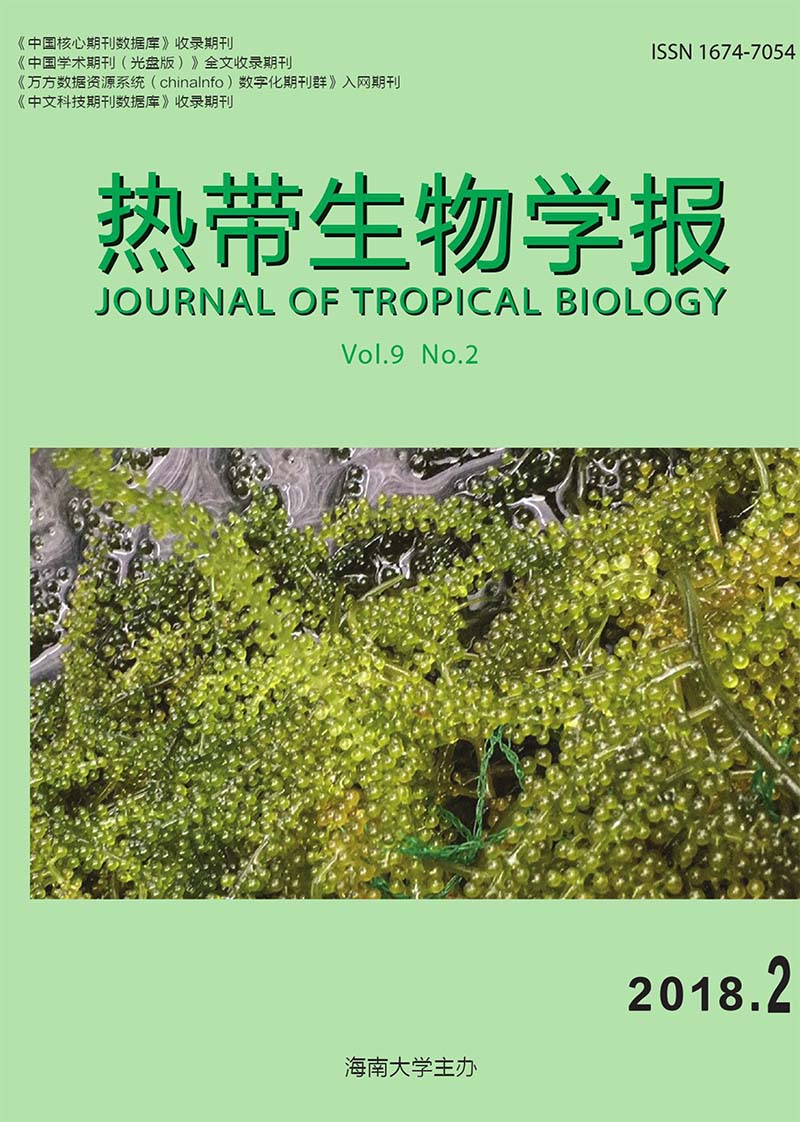Analysis and Evaluation of Nutrient Contents of Sesuvium portulacastrum and Caulerpa lentillifera
doi: 10.15886/j.cnki.rdswxb.2018.02.001
- Received Date: 2017-10-20
- Rev Recd Date: 2018-01-19
-
Key words:
- Sesuvium portulacastrum /
- Caulerpa lentillifera /
- amino acid /
- minerals /
- nutritional evaluation
Abstract: The crude nutrients, amino acids, and minerals profiles of Sesuvium portulacastrum and Caulerpa lentillifera were determined and their nutritional values were evaluated. The results revealed that S.portulacastrum and C. lentillifera contained high moisture(more than 90%). The contents of ash, crude polysaccharides and crude fibers in both species of plants were higher, up to 80% of the dry weight. The contents of crude fat in S.portulacastrum and C. lentillifera were 14.23% and 9.22%, respectively. The crude lipids were quite low, amounting to about 2.16% and 0.81% of the dry mass of S.portulacastrum and C. lentillifera,respectively. Although both S.portulacastrum and C. lentillifera contained low protein, the amino acid analysis showed they had a well-arranged complete set of amino acids, and that ttheir amino acid scores were 61.31 and66.69, respectively, higher than that of Laminaria japonica(47)and Porphyra haitanensis(54). The first limited amino acids were cystine + methionine. Flavor amino acids in S.portulacastrum and C. lentillifera accounted for40.69% and 49.17% of the total amino acids, respectively, and the contents of glutamic acid, proline acid, glycine acid, and aspartic acid as well as minerals such as Na, K, Mg, Ca, Fe, Mn, Zn, and Se were quite high in both species of plants. This experiment showed that both S.portulacastrum and C. lentillifera had rich contents of essential amino acids and minerals, and hence have a high edible value for development.
| Citation: | TANG Xianming, LIU Xiaoxia, MENG Fatong, WANG Aimin, GU Zhifeng, LIU Chunsheng. Analysis and Evaluation of Nutrient Contents of Sesuvium portulacastrum and Caulerpa lentillifera[J]. Journal of Tropical Biology, 2018, 9(2): 129-135. doi: 10.15886/j.cnki.rdswxb.2018.02.001 |






 DownLoad:
DownLoad: